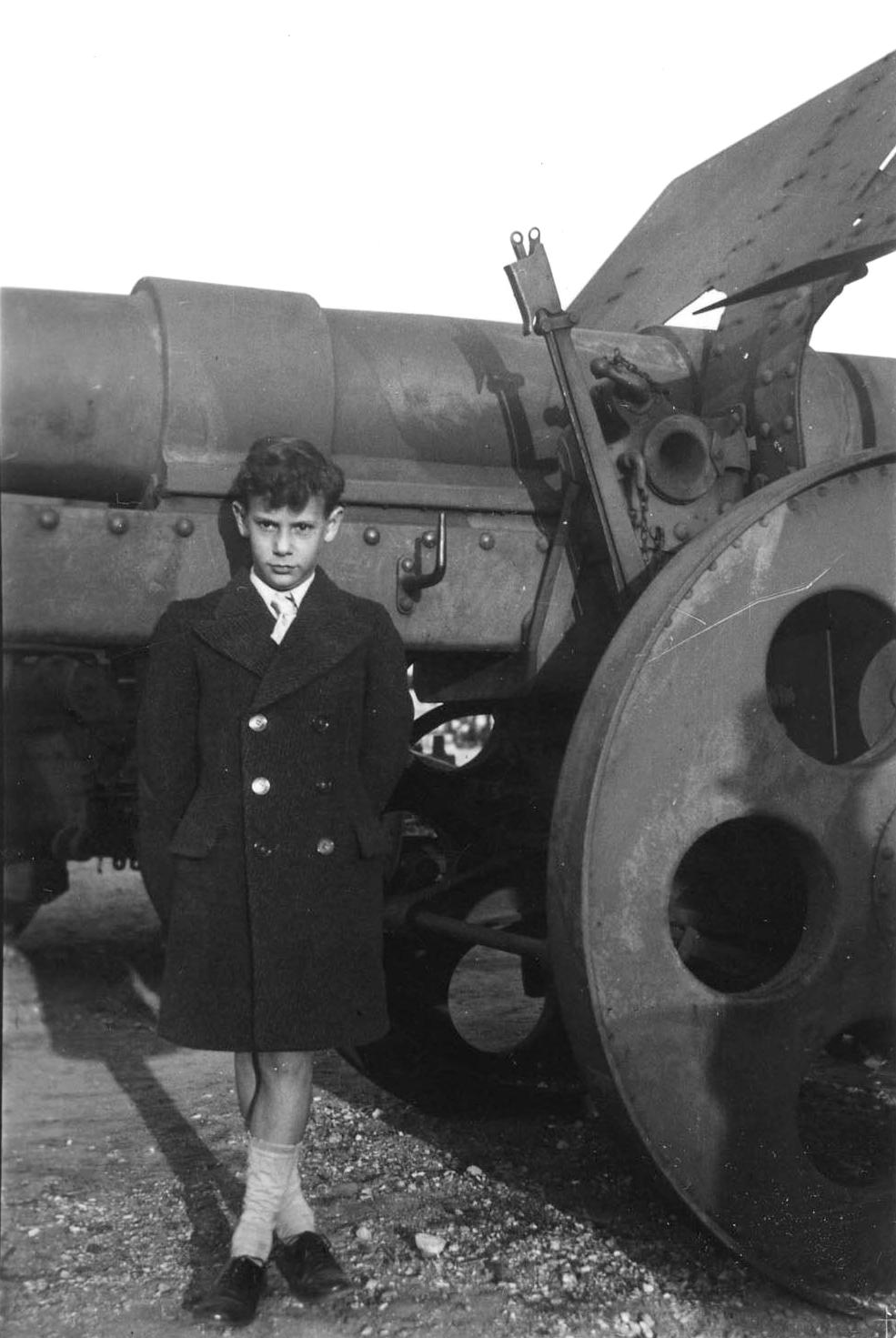
World War I Artillery: French

Figure 1.-- Here we see a French boy before World War II standing by a 155-mm de Bange gun (155 K/77). We are not sure where the photogrph was taken. It may have been some kind of military museum.
The de Bange gun was a heavy artillery piece developed by th Frnch after the Franco-Prusian Was and introduced in 1877. Notice the metals wheels, which have rather unique look and help identify the gun. France introduced two versions of 155-mm de Bange guns in late 1870's. This was the long barreled version. Like other French de Bange guns they saw use during World War 1 and the French kept them stored for possible further use after the War. They were the heaviest and largest-calibre cannons of French de Bange artillery system. The basic structure of the gun was same as used in other smaller-calibre models. The gun had de Bange screw breech and box trail. As typical the ammunition used was bagged type. The gun also had steel wheels instead of the usual wooden ones. The final use of the guns was in World War II. The Germans installed them in fixed positions in building the Atlantic Wall defences.
|
|
France's humiliating defeat in the Franco Prusian War (1870-71) resultd in a major reassessment of military arms. A major foicus was on artillery as the superior Prussian artillery had been a factor in the French defeat. One of the results of that reassment was the de Bange 155 mm long cannon mle. 1877 (155 L de Bange). It was the forst artillery piece that debuted the 155 mm caliber which is today in widespread use. The 155 L basically obselete by the outbreak of World War I due tonits massive rcoil and slow firing rate. In the war time emergeny it pressed into service. The smaller and more mobil French 75 and helped stop the Grmans, but was not very effective in attacking entrenched German positions. The heavier 155 L de Bange became the main French counter-battery piece during the first 2 years of the War. [Vauvillier]
The French 75 (Canon de 75 modèle 1897) was France's main artillery piece during World War I. The French introduced it 1897. It was the first fully integrated quick-firing gun. The technical innovations became involved in the Drefus Affair. It had a firing rate of 20 rounds a minute -- very high for the era. The rapid fire French 75 mm gun made a poweful impression early in the more mobile phase of the War, but the French Army largely because of poor leadership in the General Staff was unable to capitalize on the potential of this weapon. It did help the French slow down the German advance through Belgium and played a key role in the critical Battle of the Marne (September 1914). It also played a a mjor role at Verdun (1916). The 75 had an innovativev recoil system that bounced the barrel back into firing position. This significantly increased the rate of fire--a critical factor on the battlefield. The recoil system also made for a smoother operation which also assisted gun crews. When the War broke out, the French had 4,000 of these 75mm Field Guns (1,000 batteries of 4 guns each). At the end of the Wat they had 17,000. The German and British armies did not develop a field gun of comparable performance until the last year of the War. The French Army on the other hnd did not have modern heavy field artillery until 1917. The French 75 was also heavily used by the American AEF when it arrived in France.
HBC

Navigate the Boys' Historical Clothing Web Site:
[Return to Main World War I artillery page]
[Return to Main World War I fighting page]
[About Us]
[Aftermath]
[Alliances]
[Animals]
[Armistace]
[Biographies]
[Causes]
[Campaigns]
[Casualties]
[Children]
[Countries]
[Declaration of war]
[Deciding factors]
-------[Diplomacy]
[Economics]
-------[Geo-political crisis]
[Home front]
[Intelligence]
[Military forces]
[Neutrality]
[Pacifism]
[People]
[Peace treaties]
[Propaganda]
[POWs]
[Russian Revolution]
[Terrorism]
[Trench warfare]
------[Technology]
[Weaponry]
[Bibliographies]
[Contributions]
[FAQs]
[Images]
[Links]
[Registration]
[Tools]
[Return to Main World War I page]
[Return to Main war essay page]
[Return to CIH Home page]
Created: 3:01 AM 12/9/2017
Last updated: 3:01 AM 12/9/2017



